Review: 2011 Jeep Compass Latitude

In something of an ironic twist for an off-road brand, Jeep has had trouble figuring out which path to take lately. Jeep was late to the soft-roader party last decade, and got off to an “interesting” start when a focus group (allegedly) indicated the need for a Patriot to appeal to men and a Compass for the ladies. Most companies would have simply picked one, but the temptation to attract female shoppers to an overtly masculine brand proved too strong and Jeep decided to make both. The result is a product line that offers two similarly-priced and similarly-capable vehicles. This might have been a passable set of circumstances, had the Compass not been saddled with both a cartoonish exterior and interior plastics that even Rubbermaid would have rejected. Instead, the Compass became a symbol of how lost the go-anywhere brand had become. But after a Fiat-led makeover, an updated 2011 Compass is making a bid to rescue Jeep’s small CUV reputation… is it up to the task?
In a testament to what a hot mess the original Compass was, several Chrysler employees freely admit the “Lady Patriot” was a verruca that should have been sliced off the corporate heel back in 2007. And Chrysler has been trying hard to make a silk purse out of the plastic ear ever since. After only two years on sale, the Compass received a discount nip/tuck which did nothing for sales, which slid to 11,739 in 2009, a paltry 30% of 2007 sales (Patriot volume has remained somewhat stable). To stem the tide, the Compass received yet another much-needed update for 2011. If this timing seems odd to you, you are not alone. Two facelifts in just over four years is unusual enough for a domestic brand, but the all-new Compass is widely expected to debut in only 2 years giving this ‘lift a short life expectancy as well. Is it worth it? Check back this time next year.
The exterior re-design takes the Compass from an unholy union of a Wranger and Dodge Caliber to an 8/10ths scale Grand Cherokee. Although striking, the resemblance to the Grand Cherokee makes perfect sense as the new GC is by far Chrysler’s hottest product in terms of sales and media success. Possibly proving that some of the JGC’s halo might just rub off on the slowest-selling Jeep, the Grand Cherokee’s mini-me received unexpected styling praises from my usual Friday lunch group. Out back are some new LED tail lamps marking about the only change to the exterior, apart from the rhinoplasty. Unfortunately this means the side profile of the Compass still looks un-Jeep-like and the vertical rear door handles remain an awkward form of ingress. But taken as a whole the Compass is no longer a car you need to hide from your friends and neighbors.
While the interior still lags behind the snazzy new Kia Sportage, it is finally up to par with the American and Japanese competition in terms of materials and fit-and-finish. Interior changes wrought in 2011 are: new seating surfaces with improved padding, tweaked plastics, new armrests, the new corporate tiller, new infotainment options and some new switch gear. The new steering wheel ditches the rubbery plastic feel of the 2010 model and dispenses with the silly cruise control stalk in favor of easy-to-use wheel-mounted controls. Like other Chrysler products, the radio controls remain on the back of the steering wheel where you can’t see them. This arrangement takes some getting used to but ends up being practical, ensuring your eyes are on the road while fiddling with your tunes. While the dash design still has the feel of an economy car (because it borrows heavily from the Dodge Caliber), the parts of the car that you actually touch are finally (and honestly) a notch above the Ford Escape, my personal benchmark for comparison. I might even say the revised interior is a touch better than the 2011 Escape overall, but that’s just my opinion.
When it comes to gadgets, it is obvious the budget for renovation was small. Conspicuously absent on our $26,570 (as equipped) Compass Latitude 4×4 tester were a Bluetooth speaker phone and Apple iPod/iPhone interface. Call me picky, but I tend to expect a car with a sticker this high to give me Bluetooth and some Apple-love. Our “Latitude” tester is the mid-line trim between the Sport and Limited models so it seems doubly odd that these are not standard features on an “up-level” trim. Neither were these niceties included in the $2,300 “customer preferred” package our tester came with, which includes: A/C, power mirrors, power windows, height adjustable seats, power locks, keyless entry, heated front seats, a 110V inverter, and leather wrapped steering wheel with audio controls. Our tester also wore the $650 “convenience package” which included: an alarm, front side airbags, trip computer, garage door opener and an auto-dimming rearview mirror with microphone. (The irony of a microphone without Bluetooth was not lost on us). Buyers need to either pony up $375 or step up to the Limited (base price of $24,295) in order to get some Bluetooth phone-love.
The base radio and speaker equipment are adequate for people who need basic entertainment; for others, stepping up to the “Media center 430” gets you a 6.5-inch touch screen and the ability to browse and play your tunes off USB flash drives. Fortunately we had no problem playing iTunes AAC files on the head unit. A further bump up to the 430N model (only available in the Limited) gets you the same head unit with a Garmin designed navigation system on the 6.5-inch screen. Moving up the option list to the more expensive head units does nothing to the stock speakers however, so if you are looking for a bit more boom, a Boston Acoustics speaker system is also available. The navigation system is easy to use but lacks the voice command ability for destination entry that Ford’s SYNC systems offer. Buyers should beware that in order to get the integrated flip-down “tailgate boombox” pushed heavily on Jeep’s web page, one has to opt for the steep $1,295 “sun and sound” package which includes a moonroof and those Boston Acoustics speakers I mentioned. Despite the gadget options being somewhat limited, package costs can add up rapidly with the fully-loaded Compass limited ringing in at $31,150 (just a whisker away from a Grand Cherokee Laredo) so shop wisely.
In addition to the interior tweaks, the 2011 Compass comes fitted with new springs, new dampers with rebound springs (similar to the ones on the new Grand Cherokee) and anti-sway bars that are 10% stiffer than last year’s model. These few changes have made noticeable improvements in the Compass’ on and off road manners especially on curvy mountain roads and rough gravel where the old model would pitch and roll like a boat on the bay. Unfortunately the stock 215 width tires are a step behind the 235 rubbers worn by the Escape and Sportage and the difference in grip is readily apparent.
For 2011, the Compass can finally be had with the “Trail Rated Freedom-Drive II” AWD option (formerly only available on the Patriot). Like the regular AWD system, the FDII uses a wet clutch pack to connect and disconnect the rear differential as opposed to a true center differential. The clutch pack “slips” to allow the front and rear to turn at different rates, de-couples completely at highway speed to improve fuel economy and can offer a certain degree of “locking” when needed. The FDII system uses a modified CVT tweaked to deliver an imitation low range, the ability to force the clutch pack to lock for an approximate 50/50 maximum power split, and an extra inch of ground clearance. I say imitation because at 19:1 vs 14:1 (for the regular CVT) the effective “low range” is far from the low compared to the automatic transmission equipped Wrangler (32:1) and Liberty (25:1).
Low-range shortcomings aside, the Patriot and Compass are the only soft-road CUVs that even offer this feature… that has to count for something. On the other hand, I had the Compass during a freak hail/snow storm in May, and the lever seemed to make little difference on the road as the fully-automatic system connects or disconnects the rear at-will and the front and rear diffs don’t lock anyway. There is no annoying binding during parking lot maneuvers with the system in lock mode, which does make parking on ice a fairly drama-free event if you tires are up to the task. Side-to-side power splitting depends on the brakes to slow the spinning wheel, as the front and rear diffs are open units, and unless you are trying to do some serious off-roading, the automatic systems do their job just fine. Of course, if you were intending to do serious off-roading, you probably bought a Wrangler and you don’t need to worry about the little lever anyway. While Jeep labels the Compass as “Trail Rated,” they are a bit cagey about the specific metrics that must be met in order to attain the badge. If you’ve taken your Patriot or Compass on the Rubicon trail, let us know how it went in the comment section below.
The renovation budget being what it must have been, no improvements have been made in the engine department. Both the 2.0 and 2.4-liter engines can still be fairly described as gutless and unrefined. Power numbers remain unchanged at 158HP and 141 lb-ft for the 2-liter and 172HP and 165 lb-ft for the 2.4-liter engine. As the engines have only to motivate a little over 3,000 lbs, the math looks good on paper but is less satisfying in person due to the torque coming on quite late and quitting early. Since some shoppers may be interested in the manual transmission (available on the Sport trim FWD and AWD), they should be aware that the ratios of 3.37, 2.16, 1.41, 1.03 and .72 just don’t seem to jive well with this engine line up. The Nissan sourced CVT should allow the down-sized engine to reach (and stay at) its high and peaky power band quickly (like the Nissan Versa) but it doesn’t. Acceleration from a stop takes some time because the transmission starts varying the ratios early meaning the engine doesn’t arrive at its peak power RPM for some time.
Perhaps this is designed to make the event a little more pleasant on the ears as the 2.4L engine is not the smoothest 4-cylinder I have ever tested. For reasons best left in Michigan, engineers decided the Compass needed some fake gear ratios and an auto-stick. Don’t get me wrong, I loved the auto stick in my Eagle Vision TSi, but it is odd mated to a CVT. While you can select “gears” with the shifter, the ratios seem fairly arbitrary and useless. Nissan’s “L” range in their CVT vehicles provides far more consistent engine braking for hill descending than the forced “fixed” ratios the Compass employs. The Compass delivers MPG numbers of 21/27 in FWD trim, 21/26 in AWD trim (as tested) and 20/23 when equipped with the low-range CVT. These numbers essentially match the heavier Ford Escape and fall short of the South Korean competition. It should be noted that the Kia Sportage turbo delivers almost 100 more ponies for essentially the same mileage (at the cost of lower ground clearance). Over a 700-mile week we averaged a fairly acceptable 22MPG in mixed driving.
The Compass is a fairly compact SUV for American roads being slightly shorter than the Sportage and Escape and more than a full-foot shorter than the Equinox. Despite the proportions however, interior space easily matches the Equinox, CR-V and Sportage in most critical dimensions except for cargo capacity. Behind the rear hatch the 22.7 cu-ft capacity falls short of the 26.1 on offer in the Sportage, 31 cu-ft from the Escape and 35 from the CR-V. Some of this difference in cargo capacity is explained by the larger back seat in the Compass, which delivers more legroom for adult sized people. With the rear seats folded, the cargo room expands to a useable 67 cu-ft, more than enough for most small SUV shoppers and not far off the competition in the same folded position. If you routinely carry passengers in the rear, the smaller cargo area is an easy tradeoff for the four inches of additional legroom out back.
New clothes are not cheap and the Compass’ new look is no exception and perhaps it’s biggest sales challenge. The 2011 Compass gets a $4,000 price hike compared to the outgoing 2010 model, admittedly some of this increase is due to the increased levels of standard equipment vs the outgoing model but also means the Patriot is now some $3,300 cheaper. For a car that barely sells more than some luxury imports, raising the price seems a strange move to me. On the other hand, Chrysler’s turning a profit again, so who am I to judge?
With the Compass’ new looks and Patriot matching off-road ability, Jeep hopes the Compass will achieve at least the sales success the Patriot has. The only problem I foresee after a week with the baby Jeep is convincing shoppers to take that second look at the Jeep dealer. If the marketing mavens in Auburn Hills are unable to convince new shoppers to stop by, the Compass may just end up taking half of the Patriot’s small market share. If that were to happen it would be a pity since the Compass is finally worth a second look.
Jeep provided the vehicle, insurance and one tank of gas for this review.
0-30: 3.64 seconds
Not a fan of our Facebook page? Too bad. For our facebook peeps, here’s what you wanted to know: Jason: the towing capacity is 2,000lbs which is fairly small but no worse than the competition. Darren: Jeep finally figured that out themselves. Kristian: Day two wasn’t hard, it has seriously become a very middle-of-the-road vehicle. Nick: While I’m sure it would be easy, I didn’t encounter a task where getting it stuck would not have also gotten a “real” Jeep stuck. Next time I need to try an off-road park. CoolLikeMe: Yes to everything. Jim: the Sam Houston Tollway is about 1800 miles from where I am.

More by Alex L. Dykes
Latest Car Reviews
Read moreLatest Product Reviews
Read moreRecent Comments
- ChristianWimmer This would be pretty cool - if it kept the cool front end of the standard/AMG G-Class models. The front ends of current Mercedes’ EVs just look lame.
- Master Baiter The new Model 3 Performance is actually tempting, in spite of the crappy ergonomics. 0-60 in under 3 seconds, which is faster than a C8 Corvette, plus it has a back seat and two trunks. And comparable in weight to a BMW M3.
- SCE to AUX The Commies have landed.
- Arthur Dailey The longest we have ever kept a car was 13 years for a Kia Rondo. Only ever had to perform routine 'wear and tear' maintenance. Brake jobs, tire replacements, fluids replacements (per mfg specs), battery replacement, etc. All in all it was an entirely positive ownership experience. The worst ownership experiences from oldest to newest were Ford, Chrysler and Hyundai.Neutral regarding GM, Honda, Nissan (two good, one not so good) and VW (3 good and 1 terrible). Experiences with other manufacturers were all too short to objectively comment on.
- MaintenanceCosts Two-speed transfer case and lockable differentials are essential for getting over the curb in Beverly Hills to park on the sidewalk.




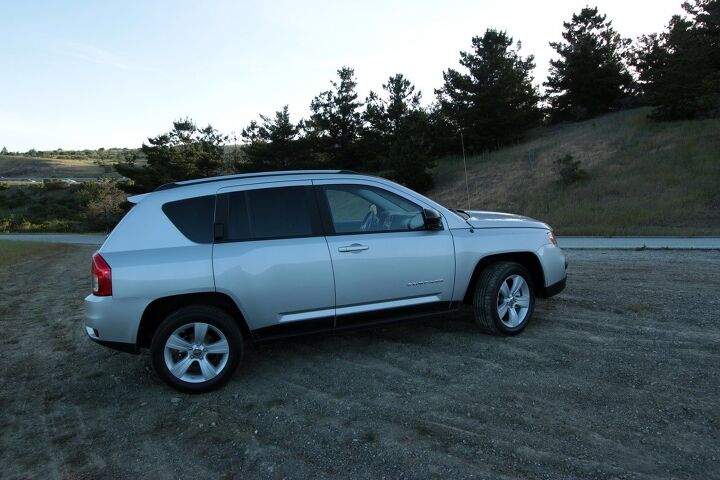

























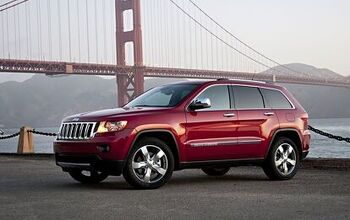
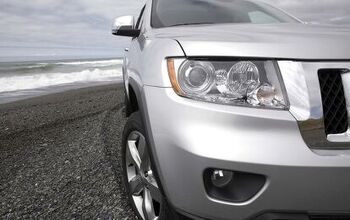
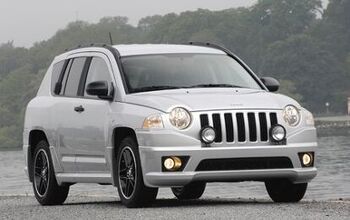
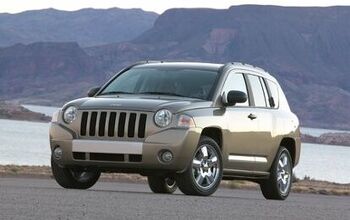











Comments
Join the conversation
The reason this vehicle is a piece of crap is because it was built with a theory in mind, not a market. The reason is is butt ugly is because it was built with a theory in mind, not a design. The reason this vehicle is about as popular as pubic crabs is because it was built with a theory in mind, not reality. Whoever followed this marketing theory, shoved Jeep over a cliff here and lost it millions. I hope they are banned forever from being allowed to print or speak another word until this bozo of a car produced a profitable cent. Jeep has a Liberty! Buyers with two "X" chromosomes do not need another Liberty! IMAGINE how much better Jeep would have done with a Liberty with the budgets wasted on producing the Compass. Instead of producing an awesome Liberty, they produced two POSs, one so hideously malformed it looks like it should have been buried in a garden to rot. So who the hell is supposed to buy a Compass? Do you people even know after stumbling around for years with this four door Quasimodo? Who the hell designed this? In what way was this thing supposed to be attractive, let alone attractive to lady buyers? This car displayed none of the attractive ruggedness of a Jeep. Instead it has looked like some kind of Bride of Frankenstein. The Compass is a disaster. So now we have a front end mimicking the mall Jeeps these marketing gurus had hoped to attract. Nice. We can see that the hideous fenders have been dropped to less hideous ones. Good. We still see a window treatment that doesn't belong on a Jeep. And we see that the price was increased by $4000 to pay for the mall Jeep front end and for an interior that is not a total embarrassment to Jeep. That is too much money. That is too much money for a Compass. That is too much money for a mall Jeep when you can walk a foot over to a Jeep Liberty and buy a real Jeep. What we have here is a better launch of a stupid idea in search of a market. It would have been better for Jeep to have simply renamed the Compass, the Latitude, and help everyone turn a corner on the pathetic history behind this vehicle. I can think off hand of a half dozen better vehicles than this one and a couple of them sit in the damn Jeep show room. Half dozen? Nah, probably a dozen since I hate foreign vehicle brands and didn't even think of them until now. If Jeep did the Compass right, it would have ended up with two Libertys. The fact that they couldn't do that after selling their bosses on the idea that they needed to produce a lady mall Jeep, prevents them from really fixing this car. $4000 for a Jeep Grand Cherokee front clip? Ridiculous.
I like the Patriot, but I still can't stand the Compass. What I don't like about it is the nagging feeling that they're going to make the replacement look like the Compass and (if we're lucky) Grand Cherokee, with not a hint of off-road looks (I suppose the Grand Cherokee looks off-road-capable-ish, but I argue it looks far less so than its predecessors, as well as much less Jeep like, especially with the suspension lowered). I wouldn't be surprised if they made the Compass/Patriot replacement even less off-road capable, either, although I'm hoping that they do something positive in that regard. In terms of styling, I think the Compass looks either (pick whichever you want) still ugly or completely anonymous. Like all the other boring, bland, futuristic-ugly-looking crossovers, we're going towards futuristically ugly, wouldn't-be-caught-dead-on-a-trail styling, a la the RAV-4 and CR-V, which sickens me. I don't care if it's a poser, I like a vehicle that looks like it belongs on a trail. At least the others look somewhat decent, though. I remember saying how ugly I thought the RAV-4 was here on TTAC, and being told it was "quite handsome" in return. And, yes, it looks good. In a city. It looks like a station wagon on stilts. Much as the CR-V does. The Escape makes a legitimate try for off-road looks, but the blocky thing is overwrought and I don't think it works. At least it tries, which it doesn't appear its predecessor, the Kuga, will. The Compass, on the other hand, still looks awful no matter where you take it. I've heard many good things from people who think it looks good. I also heard many complimentary things from people about the Nissan Juke when it first premiered, and yet they're... strangely silent now. I like the Patriot in some ways over many other, better, vehicles, simply because I despise everything about today's on-road city cars-their bland appearance, swoopy looks, and more than anything else the fact that they couldn't even get me halfway to a fishing spot or tow even a small load. The Patriot is the only vehicle available that can 1) go fishing with a trailer in tow, 2) get reasonable fuel economy when one needs it, and 3) look like a legitimate off-roader (sorry Subaru Forester fans, I think your car has all the attractiveness of a pair of Birkenstocks, even if I will admit it is one of the better vehicles on sale today). The fact that Jeep appears ready to make its smallest entry into an even more on-road oriented city car, with even less off-road chic and more of this bland faddish "futuristic" styling disgusts me. To summarize my feelings on this car (and its successor) I think it's good that Jeep wants to make a vehicle that blends some fuel efficiency with some off-road ability. But they need to do it better. In literally every way. For what it's worth, I think this is vastly superior to what the Compass was. I think Jeep should be commended for trying to do what it can with the name until something better can be made. But I hope two things: First, that the successor to this thing is superior in everything from off-road capability to even fuel economy, and second, that they don't use its looks.